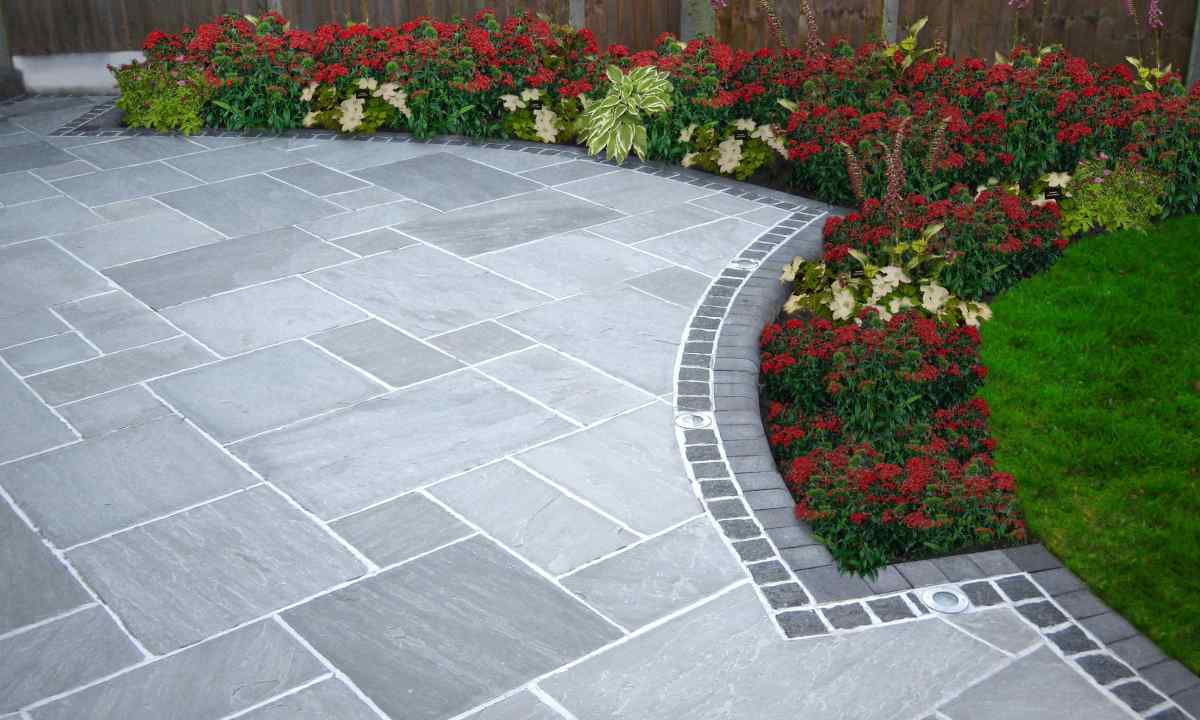The paving slabs are the material with high operating ability used for laying of paths, platforms and even pavements. Thanks to huge variety of the offered paving slabs it is possible to implement even the most intricate projects on upclassing, for example, of giving or the city park.
Types of paving slabs
Distinguish two types sidewalkof tiles: vibrocast and vibropressed. Their main difference – method of production.
The paving slabs do not emit harmful volatiles, and therefore it is considered ecologically safe material.
Production of the vibropressed tile is carried out by vibrating of harsh concrete mix in punch matrix. All this technological process is carried out on special vibrating presses. This method of production of paving slabs differs in the following advantages: - automation large-scale (thanks to small share of manual work and short production cycle the prime cost of product, and consequently, and cost is considerably reduced); - possibility of release of two-layer tile;
- high performance; - possibility of production of opilko-concrete blocks, heatblocks and other construction materials, etc. The main advantage of the vibropressed paving slabs – its durability and endurance: it is reasonable to use this material for paving of surface where there will go cars or to be put other pressure. Also such tile differs in frost resistance and low coefficients of water absorption and abrasion, so, can be applied even in territories with extreme weather conditions. As for the range, it directly depends on the available forms for creation of tiles. All vibropressed paving slabs have strict geometry of form and it is huge plus, process of its laying or repair is considerably facilitated. Production technique of vibrocast paving slabs is as follows: the concrete mix is filled in in plastic forms which establish on vibrotable (there is mix tamper), and then uniforms are taken off from table and placed in the warm place for 11-12 hours. This method of production has many pluses: - possibility of receiving paving slabs of any form with various surface texture; - color variety of products, etc. But along with positive features the vibrocasting of paving slabs has also essential minuses. One of them – the low durability of product: such tile, for example, it is possible to lay out paths at the dacha or in country house. And at vibrocast tile low frost resistance, and therefore it is suitable for upclassing of the territory in the southern regions more. And the price of such material considerable that is quite explainable, is the cornerstone of its production manual work.
Recommendations about the choice of paving slabs
Before purchase the tile needs to be examined attentively. The brilliant surface of the product (as vibropressed and vibrocast) demonstrates that during its production special additives and additional water were entered into concrete mix. And if additives can positively affect quality of tile, then will not tell about water of it. To check whether is not present in water surplus product, it is necessary to strike one paving slabs in another. The ringing sound – quality sign, and the deaf says that the producer has gone too far in water and by that has worsened quality of material. Besides, buying paving slabs from different parties, it is necessary to trace that products did not differ among themselves in color and the size. If not to pay to this question attention, eventually, it is possible to receive different tile which will be difficult to be picked up when laying. Also ordering the chosen paving slabs, it is necessary to consider that each party contains about 5% of defects. Also the expense can increase due to undercutting of tile. Therefore it is recommended to make "stock" which will make 8-10% of the area of paving.
Technology and ways of laying of paving slabs
All process of laying of paving slabs can be separated into 3 stages: - preparatory work; - paving; - sealing of joints.
Before laying of tile it is necessary to define the place of drain of water: it has to be taken away in drainage wells. The recommended bias – 5%.
After marking of the territory on which the paving slabs will keep within the deepening is dug out. Its depth has to be 28 cm. If soil at the bottom too soft, it it is necessary to humidify and stamp. Later on bottom of deepening fill crushed stone (thickness of this layer of 15 cm), level it and stamp. From above crushed stone is covered with geotextiles and fill 10 cm of sand. Sand is well leveled and carefully filled in with water from hose (so that there were pools). Several hours later in sunny weather (or next day) the sandy surface is well leveled. Then prepare sand-cement mix (ratio 8:1), strew from above with three-four-centimetric layer on sand and level. After that start directly laying of tile. There is set of ways of laying: - Wicker. It is used for paving of rectangular tile. At first on perimeter of site stack two tiles sideways, and the following couple of tiles have so that the line formed between them has been directed strictly up. - Fir-tree. The paving slabs are stacked at an angle by 45 or 90 degrees. The remarkable drawing turns out if to use tile of different flowers. - Stone blocks. Thanks to the fact that "stones" do not adjoin with each other the image of pavement from royal era is created. For this way of laying it is recommended to use tile of 3-4 flowers. - Scales. The pattern is carried out in the form of fish scales. After the termination of laying the surface of tile is filled up with sand, well stamped (sand has to jam into seams), and excess sand is swept away. Then the surface of tile is washed with water, in gaps fill up sand and again the paving slabs are washed with water.
